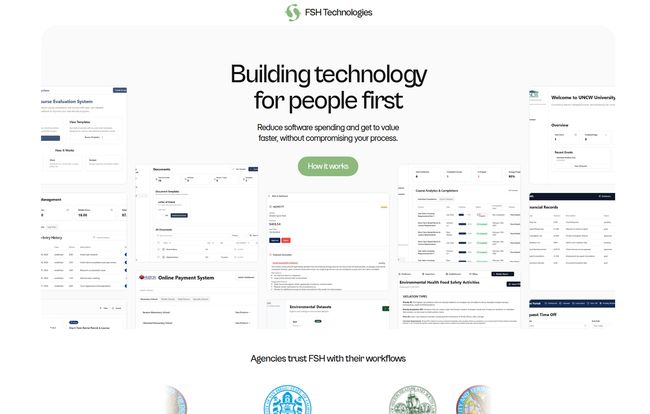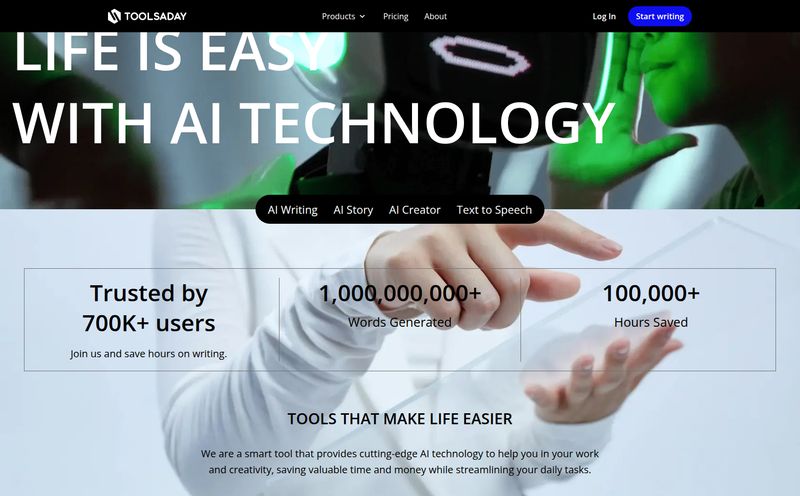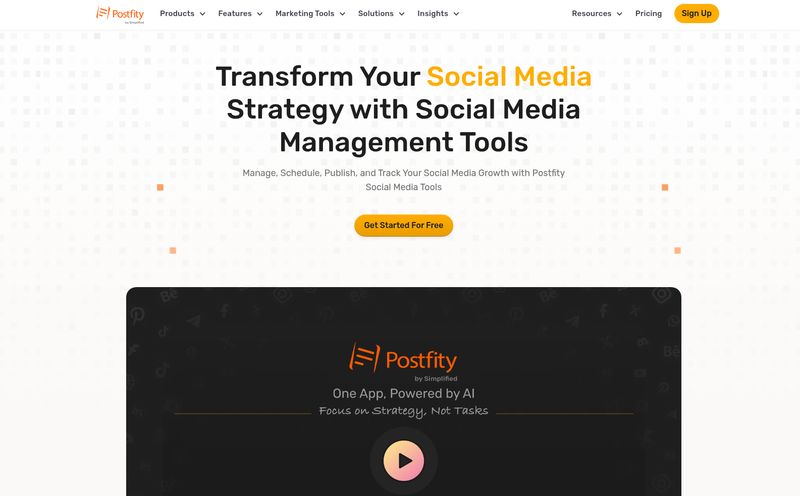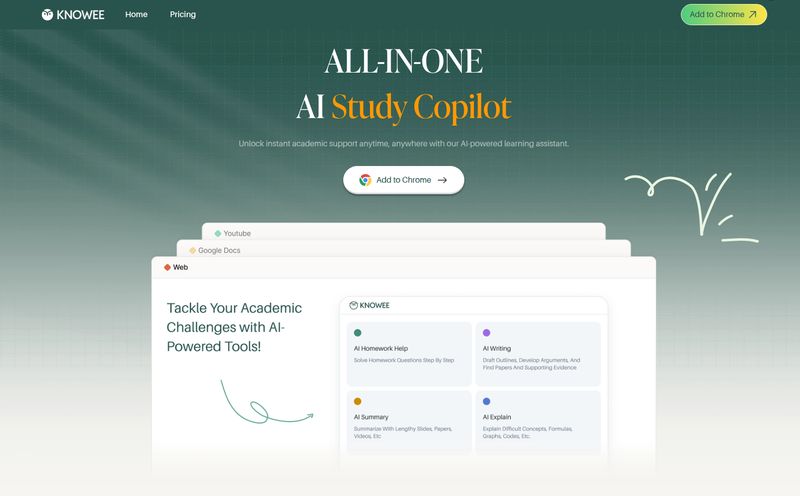If you're a developer, an engineer, or any kind of deep technical expert, you probably enjoy the creating part. You love building the thing, solving the puzzle, writing the code, or explaining the complex concept. What you probably don't love is what comes next: the endless, soul-crushing content treadmill.
You spend a week writing a killer blog post that explains a new framework. Or maybe you host an hour-long webinar, dropping knowledge bombs left and right. You hit publish, feel a moment of relief, and then the marketing team (or that little voice in your head) asks, “Great! Now, where’s the Twitter thread? The LinkedIn post? The summary for the newsletter? Can we get some pull quotes?”
Ugh. It's exhausting. I've been there, hunched over a transcript at 1 AM, trying to pull out something, anything, that sounds snappy in 280 characters. It feels like you're being asked to turn a gourmet meal into a bunch of TV dinners. The flavor just gets lost.
So when I heard about a tool called Contenda that claims to use AI specifically to solve this problem for technical content, my ears perked up. But I was skeptical. Most AI content tools I’ve used in the past have a tendency to sound… well, robotic. They strip out the personality, the very thing that makes your content worth consuming. Could this one be any different?
So What Is This Contenda Thing Anyway?
Think of Contenda as less of a content writer and more of a content sous chef. You provide the main ingredient—your brilliant podcast, video, or blog post—and it skillfully chops, dices, and preps it into a dozen other ready-to-serve formats. The official line is that it's a "unified content repository that repurposes technical content... faster than an agency using generative AI."
And that's the key difference. It’s not for writing a blog post about the “Top 5 Benefits of Yoga.” It’s designed for the gnarly, jargon-filled, beautifully complex world of technical content. It's built to understand context, identify key technical points, and—most importantly—try to do it all while keeping your original voice intact. That’s the golden promise.

Visit Contenda
The Painful Before: The Manual Repurposing Grind
Before we go further, let's just sit for a moment and appreciate the sheer amount of work Contenda aims to eliminate. Let's say you just published a 4,000-word guide to Kubernetes networking. To do it right, manually, your checklist looks something like this:
- Write a 300-word summary for the company blog.
- Create a 5-tweet thread with the main takeaways.
- Draft a more “professional” sounding post for LinkedIn.
- Pull 3-4 powerful quotes to be turned into image graphics.
- Create a Q&A or FAQ document for your community forum or Discord.
- Write a blurb for the internal and external newsletters.
That’s easily a full day’s work. It’s tedious, and it pulls you away from doing what you’re actually good at. This is the problem domain where Contenda lives.
How Contenda Aims to Fix It
So, how does it actually work its magic? From what I've gathered, it’s not just throwing a transcript at a generic GPT model. It’s a purpose-built workflow.
The Magic of Voice Preservation
This is the feature that got my attention. Authenticity is everything. People follow you for your unique take, your analogies, your specific way of explaining things. The moment your content starts sounding like a corporate brochure, you've lost the game. Contenda claims to analyze your original style and replicate it in its outputs. If this works as advertised, it's a massive win. It means the generated LinkedIn post will actually sound like you wrote it, not your intern.
Smarter Than Your Average Summarizer
We've all seen AI summarizers. They grab the first and last sentences of each paragraph and call it a day. It's… fine. But Contenda goes deeper, aiming to perform automatic topic and key point extraction. It’s looking for the aha! moments in your content—the critical definitions, the surprising conclusions, the core arguments. It's trying to find the gold, not just pan for dirt.
Your Content Marketing Buffet
Once it understands your content, it starts generating the assets. We're talking about drafts for social media posts, marketing copy, and even full-blown Q&A documents. The idea is to give you a folder full of high-quality first drafts in minutes, not days. This turns the content creation process from a chore into a simple review-and-publish workflow.
A Balanced View: The Good and The 'Eh, Could Be Better'
No tool is perfect. As an SEO, I live in a world of trade-offs. So let’s break down the real-world pros and cons based on the info out there.
The Upsides
The biggest pro is obviously speed. Repurposing content with this tool is monumentally faster than giving it to a human agency or, god forbid, doing it yourself. This isn't just a time-saver; it's a strategy-enabler. It allows a one-person expert or a small team to have the content footprint of a much larger organization. It also preserves your voice, which is a huge deal for personal brands and subject matter experts. Getting more mileage out of every piece of core content naturally helps with traffic and engagement, which is the whole point of SEO and content marketing.
The Reality Check
Now for the cons. And these are important to understand. First, you need to feed it something good. The old saying “garbage in, garbage out” applies here. If your source video is rambling and unfocused, the AI outputs will be too. Second, and this is critical, the outputs will almost certainly require human editing. Think of Contenda as an incredibly fast and talented junior copywriter. It's going to get you 80-90% of teh way there, but you, the expert, need to do that final 10-20% pass to catch nuance, correct small errors, and add that final human sparkle. Anyone expecting a one-click-publish solution will be disappointed. That's just not where AI is yet, especially for complex topics.
The All-Important Question: How Much Does It Cost?
Ah, the million-dollar question. Or, hopefully, a bit less. As of now, Contenda doesn't have a public pricing page. This is pretty common for B2B SaaS tools targeting enterprise clients or those with complex, usage-based models. It usually means you need to get in touch with them for a demo and a custom quote based on your needs.
Don't let that scare you off. It often just means they want to make sure you're a good fit for the product and can build a package that makes sense for you, rather than offering a one-size-fits-all plan that might not work for anyone.
So, Who Should Actually Use Contenda?
In my opinion, this tool has a very specific, and very valuable, audience. It's not for everyone.
This is a perfect fit for:
- Developer Advocates: Your whole job is to create and disseminate technical knowledge. This is a force multiplier for your work.
- B2B SaaS Companies: Especially those in deep tech, security, or data science who produce expert-led webinars and whitepapers.
- Technical Podcasters and YouTubers: Turn your episodes into a rich ecosystem of written content to boost SEO and reach new audiences.
- Engineering & Product Leaders: The ones who have the knowledge but absolutely zero time to engage in “marketing activities”.
If your expertise is the product, then a tool that helps you package and distribute that expertise more efficiently is a no-brainer.
Frequently Asked Questions
Can Contenda write a brand new article from scratch?
No, and that's its strength. Contenda is a content repurposing platform. It requires a piece of existing content—like a video, podcast audio, or a blog post—to work its magic. It refines and remolds your expertise, it doesn't invent it.
How much human editing is really needed?
You should always plan on a human review. The amount of editing will depend on the quality of the source material and the nuance of the topic. The goal isn't to eliminate the human, but to eliminate the tedious grunt work. Think of it as reviewing a draft from a team member, not publishing directly from a machine.
Is this just a fancy wrapper for ChatGPT?
It's more than that. While it uses generative AI, Contenda is a specialized workflow and a fine-tuned system designed specifically for repurposing technical content and preserving voice. It’s the difference between a general-purpose toolkit and a specialized surgeon's scalpel. You could try to jury-rig a similar process with generic tools, but it would be far more clunky and less effective.
What kind of content works best as a source?
Long-form, high-value content is the ideal input. Think hour-long webinars, in-depth podcast interviews, detailed technical tutorials, and comprehensive blog posts. The more substance you give the AI, the more it has to work with.
My Final Verdict on Contenda
I started out skeptical, but I'm ending up optimistic. Contenda isn't selling a magic button that creates content out of thin air. It's selling something much more valuable: time and scale. It's a tool that respects the creator's expertise and seeks to amplify it, not replace it.
For the right person—the busy technical expert who wants to build an audience without becoming a full-time marketer—this could be a game-changer. It bridges the gap between creating great content and actually getting it in front of the people who need to see it. And in our crowded digital world, that's a bridge worth building.
Reference and Sources
- The official Contenda website: contenda.co
- A great primer on content repurposing strategy from Moz: The Why and How of Content Repurposing



